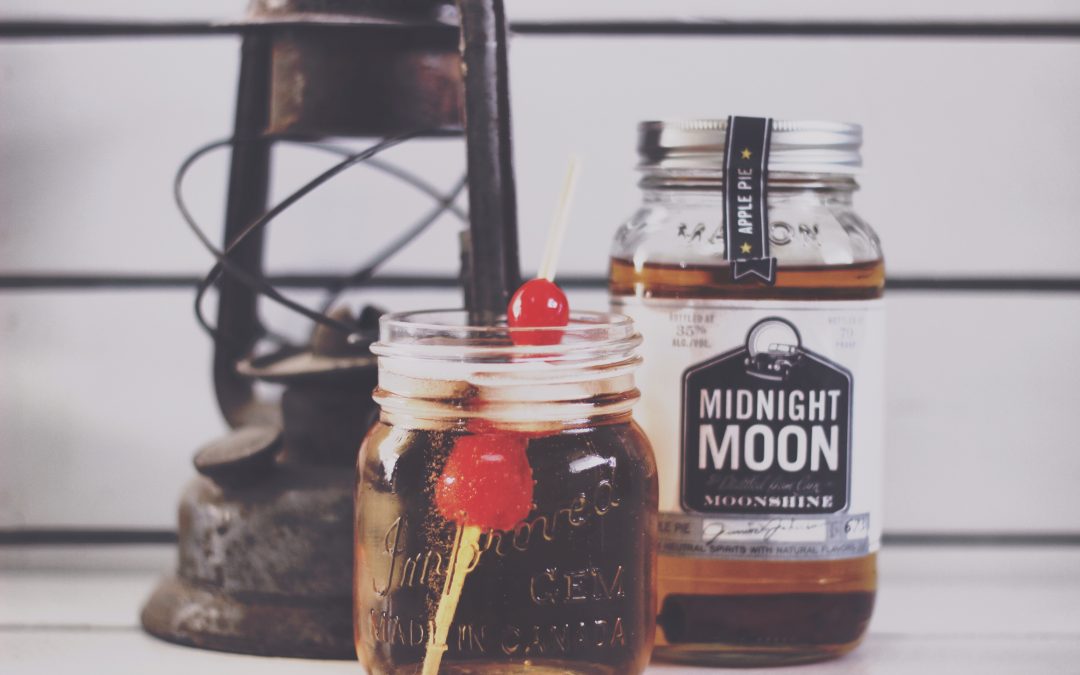When SHTF, you need to be prepared for anything so learn how to make a moonshine still and know why you need one at home or for survival!
RELATED: Bullseye! The Ultimate Steel Target Solution | Competition Target Systems
How to Make a Moonshine Still | A Step-by-Step Guide
What Is a Moonshine Still?
A moonshine still is a device you use to distill liquid mixture by a process of heating, then cooling, thus separating or purifying the liquid through the vapor collected.
Moonshine is actually what you call the liquor produced at a time when it was illegal to do so. A moonshine still, then, will not only produce distilled water but liquor too, which is handy in survival situations.
While we have the process of purifying water in mind in making this still apparatus, it doesn’t hurt to know you can make high-proof liquor with it, too.
Liquor, which may be handy for preserving food, medical purposes, and a little sip every now and then when the going gets tough in an SHTF scenario.
Reminder: This is not an electric moonshine still.
What You’ll Need:
- Aluminum pot with an aluminum lid (we used a tamale steamer from a place that rhymes with Target…Doh!)
- 5-Gallon bucket
- Drill
- 1/8 inch drill bit
- 3/8 inch drill bit
- Cooking Thermometer
- Teflon Tape
- Hot glue gun with high-temperature hot glue sticks
- Metal File
- 3/8-inch to 3/8-inch compression adapter (found in the plumbing section)
- 20 ft. Refrigerator coil
- Ice
- A stove or other consistent heat source (when using the still you need to keep whatever you are boiling at a very even temp)
Step 1: Start With the Cover
Drill a 1/8 inch hole into the lid of the aluminum pot for your still. Throw the lid over a piece of scrap wood to make it easier and drill a hole a few inches back from the edge of the lid.
Step 2: Prepare Thermometer
Wrap the thermometer with Teflon tape. Originally, we were just going to wrap the thermometer with Teflon tape to create an airtight seal. But, we decided we wanted to secure this thing in place even more with some hot glue (rated for high temps).
You can probably get away with just using hot glue at the end of the day and ditching the Teflon.
Step 3: Set up Cover and Thermometer
Slide the thermometer in the hole. Thread your cooking thermometer through the hole so it sits nice and flush on the top of the lid.
Step 4: Secure Thermometer
Secure the thermometer with hot glue. For those concerned that hot glue is a bad choice for this project (since it will be in direct contact with hot steam), it’s important to note that high-temperature hot glue sticks have a melting point well above the melting point of water (100 °C).
This is also true for the melting point of “other liquids” (78 °C). There are other adhesives you can use, including high temp silicone and even high temp resins.
Just make sure whatever you use is rated for heat well beyond what steam your liquid will be creating.
Step 5: Drill Another Hole
Drill a 3/8 inch hole in the pot lid. Begin by drilling another 1/8 inch hole in the lid. This will act as a starter hole for the much bigger 3/8 inch drill bit.
Put it roughly opposite from the thermometer across the lid. Drill a 3/8 inch hole with the 3/8 inch drill bit.
Step 6: File
If there are any burrs, this can cause some problems when inserting the compression fitting. Take a file and grind the burrs down until they are gone.
Step 7: Set up Compression Fitting
Insert a compression fitting into the lid of the still. Insert the male threaded nut of the compression fitting into the hole by twisting it through from the bottom of the lid.
The fit won’t be perfect, but don’t worry if it jiggles around a little bit.
RELATED: How To Build A Salt Water Distiller | Survival Life Guide
Step 8: Seal Fitting
Seal the fitting with hot glue. This seal needs to be airtight to prevent steam from leaking through it. It’s time to bust out that trusty glue gun again! Make sure you put hot glue on the other side as well, working well around the seams.
Step 9: Attach the Copper Coil to the Lid
Take the female-threaded nut that came with your compression fitting, then attach it to one end of the refrigerator coil. This end of your compression fitting has a part called a “ferrule” that comes with it.
It’s a small circular ring that looks kind of like a grommet. The ferrule helps create a tight connection between the female and male ends of your compression nut.
Screw the female-threaded nut onto the male-threaded nut protruding from the lid of your still.
Step 10: Drill a Hole Into the Bucket
Drill a 3/8 inch hole in the bucket. Use a 1/8 inch drill bit to begin a pilot hole in the 5-gallon bucket. Put it about two inches above the base.
With a 3/8 inch drill bit, drill a 3/8 inch hole where the pilot hole is.
Step 11: Insert Second Compression Fitting
Insert second compression fitting into the bucket. Screw the male-threaded nut of the other compression fitting into the bucket.
Step 12: Make the Seal Watertight
Make the seal watertight with the hot glue gun. Just like you did with the lid, seal this dude nice and tight with the glue.
Step 13: Tighten Refrigerator Coil
If needed, tighten the refrigerator coil. If your coil is currently too big to fit snugly in whatever bucket you are using, you want to close down the coils first.
Use something cylindrical to help you reshape it, like this coffee that can be grabbed from the kitchen. Anything with a cylindrical shape will do the trick.
Work fairly gently so you don’t ding up your tubing, pressing down on the coil rings to collapse the system to fit. Lastly, attach the coil to the bucket to finish up your DIY moonshine still.
Watch this video by Jake Foster on how to build a homemade moonshine still:
Now you know how to make a moonshine still, you’ll have an alternative in case you run out of water heating options. Sure, a homemade still will require a handsome amount of materials, but having one at your disposal will definitely come in handy.
Have you tried making a DIY moonshine still before? Share your experience with us in the comments section below!
Up Next:
- The Complete Guide To Knife Steel Quality
- 9 Grill Tools Every Grill Master Needs To Have
- Survival Gift Guide: Awesome Christmas Gifts for Preppers
Calling all preppers, craftsmen, bushmasters, outdoorsmen and all-around skilled people, Survival Life needs YOU! Click here if you want to write for us.
Don’t forget to stay connected with us on Facebook, Twitter, Pinterest, and Instagram!
Editor’s Note: This article was originally published in February 2019, and has been updated for quality and relevancy.
**Disclaimer: All content on this site is for informational purposes only. Please read our full disclaimer here**


